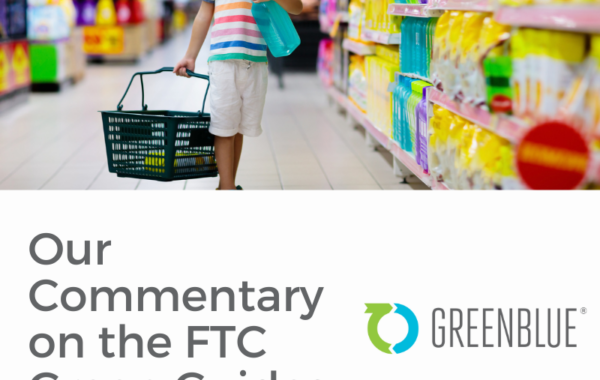January 23, 2018
The safety of the chemicals in the products we use every day is getting increasing attention from consumers, NGOs, and the media. But migration into food is not the only way people are exposed to chemicals from packaging – for example, chemicals can be absorbed through the skin when a consumer touches packaging materials. Even if the chemicals are determined to be low-risk while the package is in use, they could have environmental or health impacts during the production or disposal phases, and could also affect the ability of the package to be safely recovered and transformed into a new product. Packaging designed with material health in mind is free of known and emerging chemicals of concern, and takes the full lifecycle of the material into account.
Food Contact Regulations and Other Legal Requirements
As a baseline, packaging materials must comply with applicable regulatory requirements in the jurisdiction where they’ll be sold. These requirements can generally be grouped into two categories: food contact regulations and other regulations.
Food contact regulations generally identify materials that can and can’t be used in packages that come into contact with food. Regulations vary by jurisdiction – in the U.S., the Food and Drug Administration is responsible for regulating food contact substances; the EU has its own regulations for food contact materials and other regulations apply elsewhere.

Other requirements relate to the presence of heavy metals – specifically, lead, mercury, cadmium, or hexavalent chromium. Nineteen U.S. states have implemented laws based on model legislation from the Toxics in Packaging Clearinghouse (TPCH) (formerly known as the CONEG legislation), which prohibit the intentional use of these metals and restrict the combined concentration in packaging materials to 100 ppm. The EU Packaging Directive also generally limits the total concentration of these metals in packaging or packaging components to 100 ppm.
Some requirements apply to both packaging and the product. For example, California’s Proposition 65 requires warning labels if packaging materials contain substances on the list of carcinogens and reproductive toxins established by the state, and REACH requires suppliers of products made in or imported into the EU that contain substances on the Candidate List of Substances of Very High Concern at concentrations above 0.1% to notify their customers.
Retailer Pressure
Pressure from major retailers can have as much impact on packaging decisions as regulatory requirements, and many retailers are starting to give serious consideration to the chemicals in products they sell. For example, Walmart recommends that its suppliers start by identifying priority chemicals in their packaging. As NGOs and consumers put pressure on retailers to eliminate hazardous chemicals from the products and packaging they sell, more and more retailers are developing chemicals policies including goals to reduce hazardous chemicals in packaging, which will in turn put pressure on companies that supply those retailers.

A Precautionary Approach Can Protect Company Reputation
Often, a chemical in packaging will emerge as a concern in the public eye as research is ongoing, before regulators take action against it. Consumers don’t necessarily make the distinction between the inherent hazard associated with a chemical, and the risk associated with use of that chemical in a particular application (which takes exposure levels into account) – they just want to know the chemical is not in the product or packaging they’re buying. Companies that don’t take these concerns seriously risk damage to their reputations.
Plus, an assessment of risk to the consumer while in use may not take the full life cycle of the chemical into account. Chemicals could be released into the environment following their manufacturing, industrial uses or disposal, or could inadvertently find their way into future products made from recycled materials, such as children’s’ toys made from recycled electronics containing hazardous flame retardants.

Companies should carefully consider whether substitute chemicals present hazard concerns similar to the hazardous chemicals being replaced. “Regrettable substitution” is especially a pitfall with drop-in replacement chemicals, since two substances that are chemically similar may have similar functional attributes, but also have similar hazard profiles. Some examples of regrettable substitution include the replacement of bisphenol A, widely recognized as a hazardous chemical with endocrine disrupting effects, with the similar bisphenol S in certain applications, such as thermal paper used for receipts, and the replacement of long-chain per- and polyfluoroalkyl substances (PFAS) with functionally similar molecules with a shorter chain length.
In light of these considerations, companies looking to preserve their reputations may want to take a precautionary approach, working to identify and eliminate chemicals of concern in their packaging even when not legally required to do so. Think of the ingredients in packaging materials as nutrients in a system – if selected with care, these ingredients won’t come back to cause harm when the materials are recirculated through the economy.

What Can Companies Do?
So, what are some steps companies can take to ensure that material health is part of their sustainable packaging strategy?
- Understand what goes into the materials used. This may require engaging with suppliers, or maybe even going multiple steps up the supply chain for a full ingredient disclosure.
- Evaluate the hazards associated with the ingredients. A good first step is to see whether they are on a list of known chemicals of concern – tools like SciveraLENS Rapid Screen or GreenScreen List Translator® can help with this.
- Engage with stakeholders. Pay attention to NGOs, governmental bodies, and the media to monitor emerging chemicals of concern.
- Consider establishing a restricted substance list so it is clear to suppliers and others which chemicals are unacceptable to use in packaging materials.
- Avoid regrettable substitutes. Make sure that when a chemical of concern is eliminated, it isn’t replaced with a similar chemical that is equally hazardous – or worse!
- Be transparent. Customers will be reassured by knowing the company has nothing to hide.






